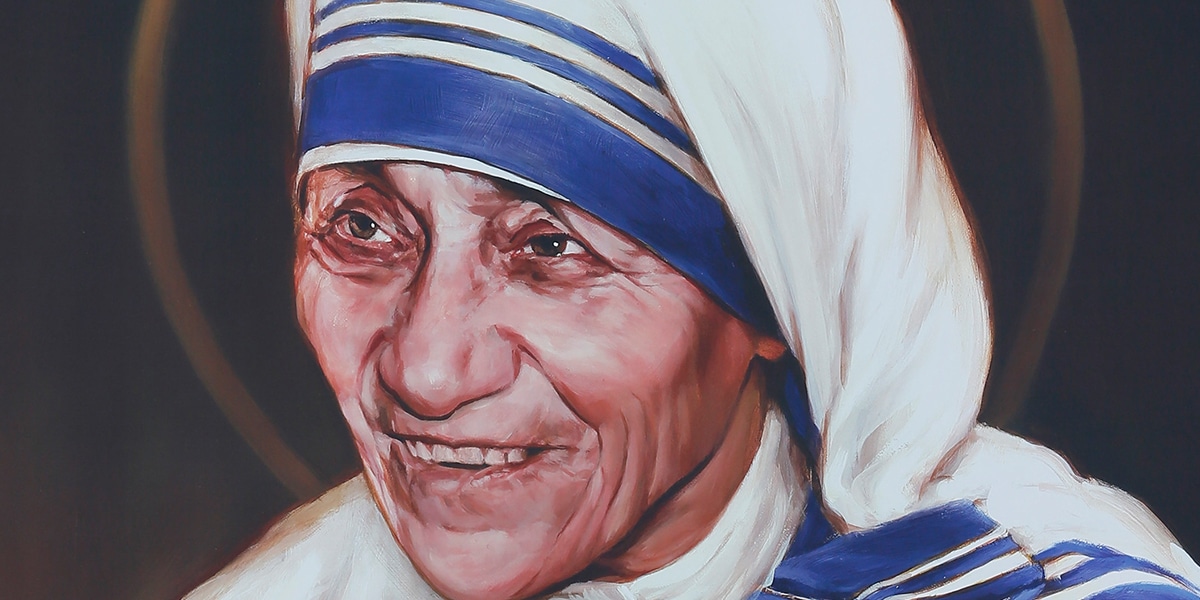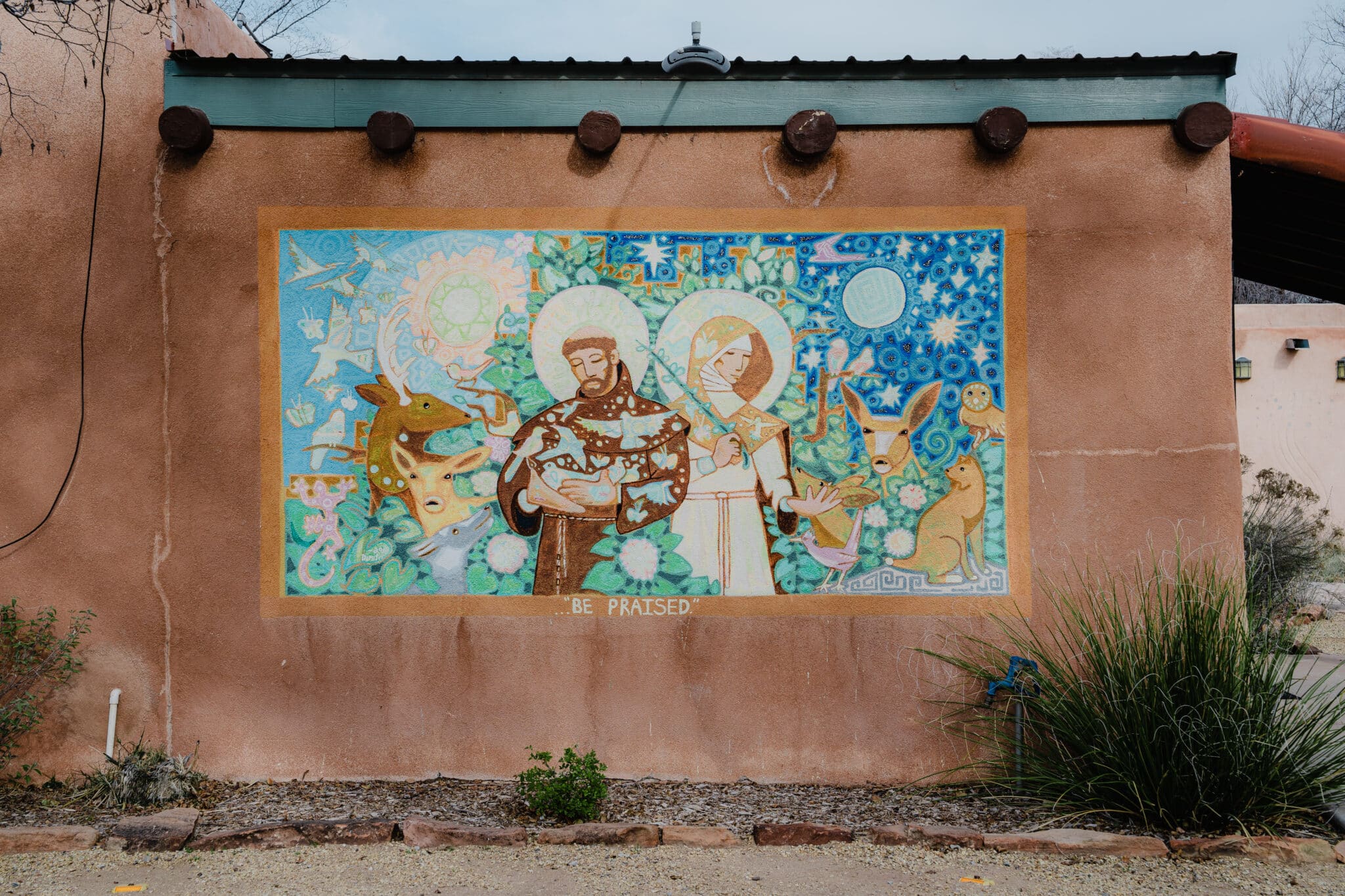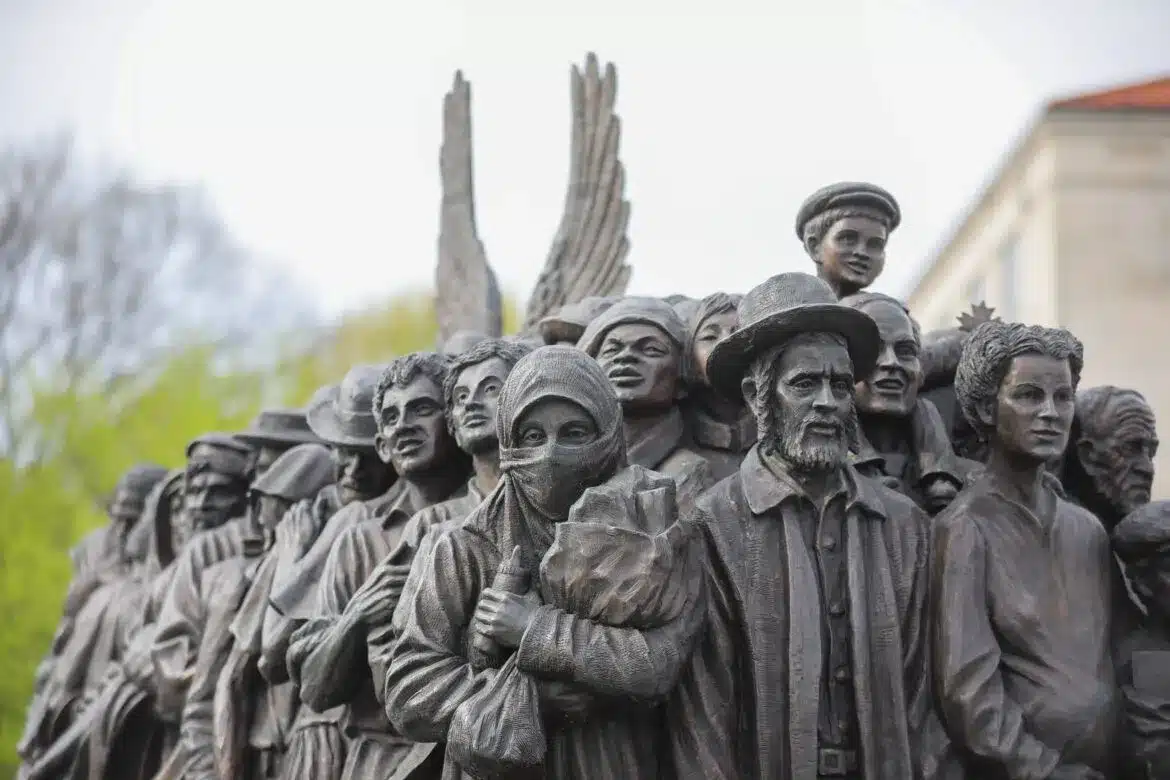It’s an image known to many the world over: An elderly nun of unremarkable size, dressed in a white sari, takes into her arms a sickly child from the gutters of Calcutta. The nun carries the child to a bed in an overcrowded room, where she, aided by sisters in her order and other volunteers, spend the coming hours nursing the sick, feeding the hungry and comforting the dying.
In her 87 years, this formidable woman’s mission to help the poorest of the world was a pounding thirst she tried urgently to quench. With hands gnarled by time and a face weathered by age, Mother Teresa—who founded the Missionaries of Charity in 1950—braved the polluted and overcrowded streets of India and beyond, embracing people whom many feared to touch, advocating for the world’s most forgotten citizens.
A true visionary, this holy woman saw past the wounds of lepers and comforted the sick as they wrestled with death. Simply, no person was beyond her capacity for love and assistance.
She thought herself to be in no better company than when she surrounded herself with the poor. Not only did she align herself with those living on the barren outskirts of society; she made a home there.
Mother to Many
When she died in September of 1997, the defeated of this world lost their greatest champion. The legacy of her work, however, is still with us. By 1996, 517 missions in more than 100 countries functioned under her supervision. Still, she exhibited humility at every turn.
Case in point: In 1964, Pope Paul VI, moved by her efforts, gave Mother a Lincoln Continental as a gesture of his gratitude. She accepted the car, sold it and used the profits to establish a leper colony in West Bengal.
She sought neither praise nor reward, though she earned both. Unimpressed with her own celebrity, this winner of the Nobel Peace Prize in 1979 was single-minded in her pursuit to help the less fortunate. In their tattered faces, she saw the image of God.
“I see God in every human being,” she once said. “When I wash the leper’s wounds, I feel I am nursing the Lord himself. Is it not a beautiful experience?”
Others have been eager to share her mission. In 1984, the Lay Missionaries of Charity was founded for those inspired by the spirit and generosity of this gracious woman. There are approximately 1,000 members in the organization, each one sharing in her ideal: to feed the hungry, shelter the homeless and tend to the sick.
It was evidence of her influence that volunteers assembled in the first place. Alongside the Lay Missionaries of Charity are several orders and communities that bore her touch, such as the Brother Missionaries of Charity, the Contemplative sisters, brothers and priests.
Perhaps only she could influence such diverse people. Volunteers from different countries and different religions convened to achieve a greater good. People who had no reason to share their lives nevertheless joined hands and walked alongside a holy woman whom they loved.
Mother’s life was a textbook of lessons we’d all be wise to study. In our lives, we should look to her as the model of patience and goodwill. Her ability to see the beauty in each person and the commonalities that bind the human race are gifts that we should attain.
Yet in our modern society, much is judged solely on what the eyes can show us. She—ever the revolutionary—looked at the world and its people with the eyes of her soul. She reminded us, in word and in action, that each of us is part of a whole and that all life is to be honored and protected.
For our nation—indeed for all nations—her lessons are just as timely. World leaders who praised her abundantly while she was alive, and even after her death, need only look to their own actions to see the glaring contradictions.
To be certain, integrity and goodness can still be found in the world today, yet we are living in an era familiar with violence and war. It is an age of distrust, discrimination and diminished understanding.
In her life, the saint from Calcutta showed us a nobler way to look at our neighbors, both nationally and internationally. In her death, it should be our task to put those examples to use. Her tireless love of all people, from every culture, should be the standard by which we live.
A Blessed Woman
Edging just past five feet in height, she was not a physically imposing figure. Yet her arms were long enough to embrace the thousands she saw as her own children.
To this blessed woman, no person in need of help was turned away, and anyone with an able body and a willing heart could join her family of workers. In her eyes, we were all children of God—the crippled, the healthy, the weak and the strong. We are all one body, one family.
In the sores of the lepers, she saw the wounds of Christ; in the hearts of the workers, she saw salvation. To those who felt called to such work, regardless of their nationality, religion or worldview, this “Saint of the Gutters” took them each by the hand and seemed to say, with unwavering hope, “Come with me.”
Pope Francis on Mother Teresa
“Give us, Lord, your grace, in you we place our hope!” Like the Psalmist, how many times, in moments of interior desolation, Mother Teresa also repeated to her Lord: “In you, in you I hope, my God!”
Let us praise this little woman enamored of God, humble messenger of the Gospel and tireless benefactor of humanity. We honor in her one of the most outstanding personalities of our time. Let us accept her message and follow her example.








